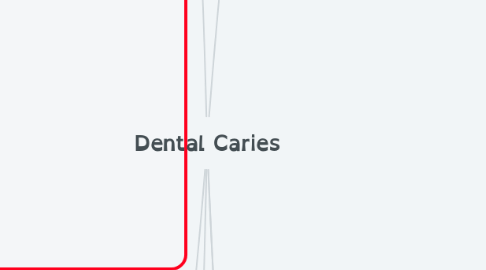
1. Bacterial Plaque
1.1. Composition
1.1.1. Microorganisms
1.1.1.1. 60-70%
1.1.2. Amorphous Matrix
1.1.2.1. 30-40%
1.1.2.2. Proteins
1.1.2.2.1. Salivary Mucoids
1.1.2.2.2. Gingival Fluids
1.1.2.3. CHO
1.1.2.3.1. Dextrans
1.1.2.3.2. Levans
1.1.2.3.3. Amylopectin
1.1.2.4. Inorganic Content
1.2. Tenacious structure
1.2.1. diverse community of closely packed microorganisms
1.2.2. Embedded in Matrix
1.2.3. Organized Biofilm
1.3. Mechanism
1.3.1. Acquired Enamel Pellicle
1.3.1.1. By Selective adsorption
1.3.1.2. Act as Diffusion Barrier
1.3.2. Colonization of the Pellicle
1.3.2.1. Pioneer Community
1.3.2.2. Intermediate Community
1.3.2.3. Mature Community
1.4. Role
1.4.1. Diffusion Limiting Membrane
1.4.1.1. Retain produced organic acids in high %
1.4.1.2. slows down buffers entry from Saliva
1.4.2. Contributes to
1.4.2.1. Adhesiveness
1.4.2.2. Bulk
1.4.2.3. Resistance to washing by Saliva
1.5. Factors
1.5.1. Anatomy & Position of teeth
1.5.2. Presence of Appliances
1.5.3. Structure of tooth surface
1.5.4. Oral Hygiene Measures
1.5.5. Diet Composition
2. Cariogenic Bacteria
2.1. Features
2.1.1. Acidogenic
2.1.2. Acidouric
2.1.3. Synthesis of Extracellular Polysaccharides
2.1.3.1. Dextrans
2.1.4. Synthesis of Intrracellular Polysaccharides
2.1.4.1. Amylopectin
2.1.5. Active transport of fermentable sugars
2.1.6. Attachment Mechanisms
2.2. Types
2.2.1. Streptococcus Mutans
2.2.1.1. Caries Initiation
2.2.1.2. Transmissible
2.2.1.3. Mechanism
2.2.1.3.1. Adhesins
2.2.1.3.2. sIgA
2.2.1.3.3. Potease Enzymes
2.2.2. Lactobacillus
2.2.2.1. Caries Progression
2.2.2.2. Only Pits & fissure Caries
2.2.2.3. Pioneers of Dentin Caries
2.2.2.4. Caries Susceptibility tests
3. Sucrose is Arch Criminal
3.1. Many available forms
3.2. Most frequently consumed CHO
3.3. Low Molecular Weight
3.3.1. Easily diffused
3.4. Rapidly broken down
3.4.1. by bacterial enzymes
3.4.2. More Acids
3.5. Dextrans
3.5.1. Extracellular Polysaccharides
3.5.2. Water Insoluble
3.5.3. Glucose Polymer
3.5.4. Highlt Adhesive & Sticky
3.6. Levans
3.6.1. Extracellular Polysaccharides
3.6.2. Fructose Polymer
3.6.3. Water Soluble
3.6.4. Less adhesive & Sticky
4. Host Factors
4.1. 1-Susceptible Tooth
4.1.1. A-Position
4.1.1.1. Mandibular Teeth
4.1.1.2. Posterior Teeth
4.1.1.3. Malposed/Crowded Teeth
4.1.2. B-Morphology
4.1.2.1. Pits & Fissures
4.1.2.1.1. k-type
4.1.2.1.2. V-type
4.1.2.1.3. I-type
4.1.2.1.4. U-type
4.1.2.2. Contact Area
4.1.3. C-Structure
4.1.3.1. Enamel & Dentin Composition
4.1.3.1.1. Abnormalities
4.1.3.1.2. Newly Erupted Teeth
4.1.3.2. Enamel Outermost Layer Composition
4.1.3.3. Nutritional Status
4.1.4. D-Fluorides
4.1.4.1. Cariostatic Effect
4.1.4.1.1. Resists Acid Demineralization
4.1.4.1.2. Enhances Remineralization
4.1.4.1.3. Inhibits Bacterial Growth
4.1.4.2. Not Exceed 1.5ppm
4.1.4.3. Supply Form
4.1.4.3.1. Sea food
4.1.4.3.2. Water
4.1.4.3.3. Topical Fluoridation
4.2. 2-Saliva
4.2.1. A-Washing Effect
4.2.1.1. Inverse relationship
4.2.1.1.1. Flow-rate
4.2.1.1.2. Caries Incidence
4.2.1.2. Xerostomia-related Conditions
4.2.2. B-Buffering Capacity
4.2.2.1. Inverse relationship
4.2.2.1.1. Buffers (bicarbonate/phosphate)
4.2.2.1.2. Caries Incidence
4.2.2.2. Diffuse into Plaque
4.2.2.2.1. Decrease Acidity
4.2.3. C-Degree of Viscosity
4.2.3.1. Direct Relationship
4.2.3.1.1. Salivary glyco-proteins
4.2.3.1.2. Caries Incidence
4.2.3.2. Form Acquired Enamel Pellicle
4.2.3.2.1. Protect Enamel
4.2.4. D-Antibacterial effect
4.2.4.1. Lactoferrin
4.2.4.1.1. Interfere with bacterial iron metabolism
4.2.4.2. Peroxidase
4.2.4.2.1. Inhibits
4.2.4.3. sIgA
4.2.4.3.1. Inhibits bacterial adhesion
4.2.4.3.2. Prevents colonization
4.2.4.4. Lysozyme
4.2.4.4.1. Cell-Wall Lysis
5. Ferment-able CHO
5.1. Types
5.1.1. Monosaccharides
5.1.1.1. Glucose & Fructose
5.1.1.2. Less Cariogenic
5.1.2. Disaccharides
5.1.2.1. Sucrose & Maltose
5.1.2.2. the Most Cariogenic
5.1.3. Polysaccharides
5.1.3.1. Starch & Glycogen
5.1.3.2. The Least Cariogenic
5.2. Total Amount
5.2.1. amount CHO
5.2.1.1. Caries Incidence
5.3. Frequency
5.3.1. Frequency CHO
5.3.1.1. Caries Incidence
5.3.1.1.1. Availability of CHO
5.3.1.1.2. Microorganisms Activity
5.3.1.1.3. Acid Demineralization
5.3.1.1.4. No Saliva Cleansing or washing
5.4. Texture
5.4.1. Sticky CHO is Cariogenic
5.4.1.1. Longer time on tooth
5.4.1.2. Slowly washed by saliva
5.4.1.3. More accessible to microorganisms
5.4.1.3.1. more Acids
5.5. Local Effect
5.5.1. Directly into Stomach
5.5.1.1. No dental Caries
5.5.2. Directly to Oral Cavity
5.5.2.1. Produce dental Caries
5.6. Refinement
5.6.1. Increases Carogencity
5.6.1.1. % fermentable CHO
5.6.1.2. Adhesiveness
5.6.1.3. Removal of Fibrous Material
6. Biochemical Reactions
6.1. 1-Acid Production
6.2. 2-Extracellular Polysaccharides
6.2.1. Sticky Plaque
6.2.2. bulk of Plaque
6.2.3. Additional source of CHO
6.2.3.1. More Acids
6.2.4. Additional Store of CHO
6.3. 3-Intracellular Polysaccharides
6.3.1. Glucose, Fructose,Sucrose & Maltose
6.3.2. Store of Fermentable CHO
